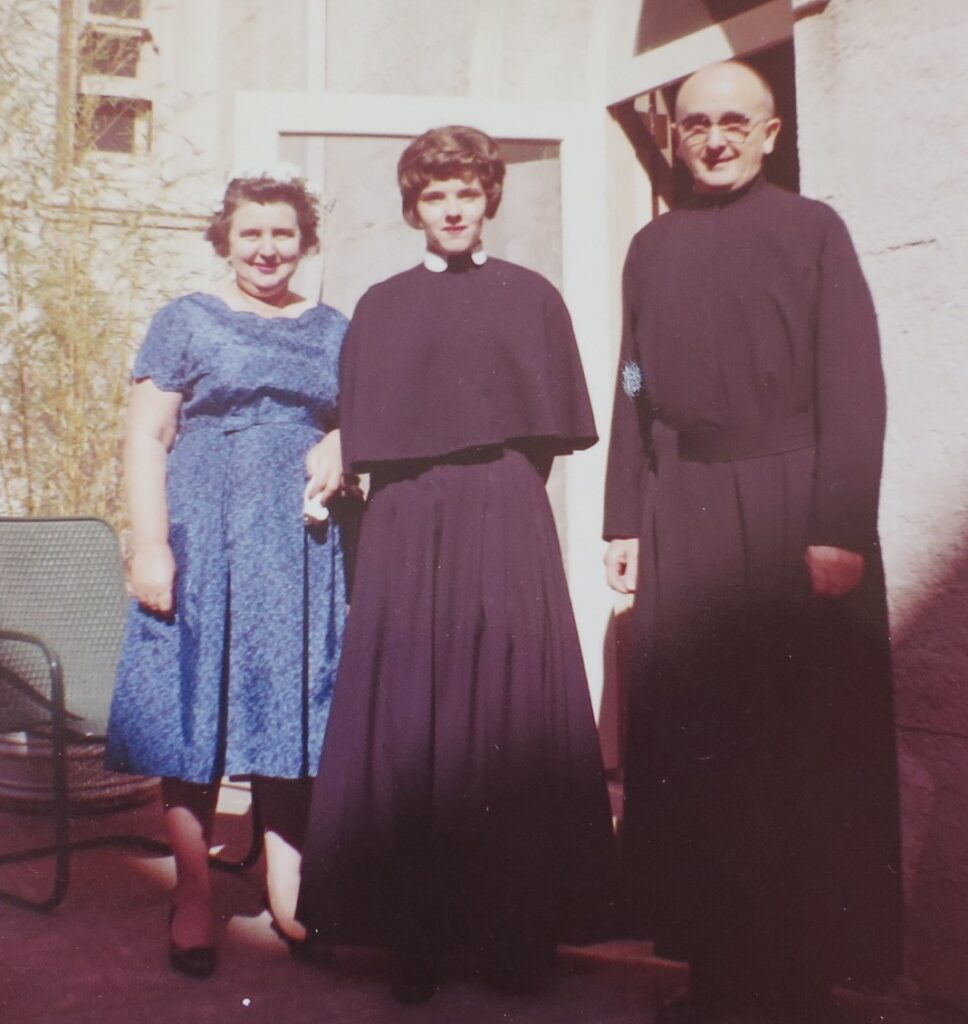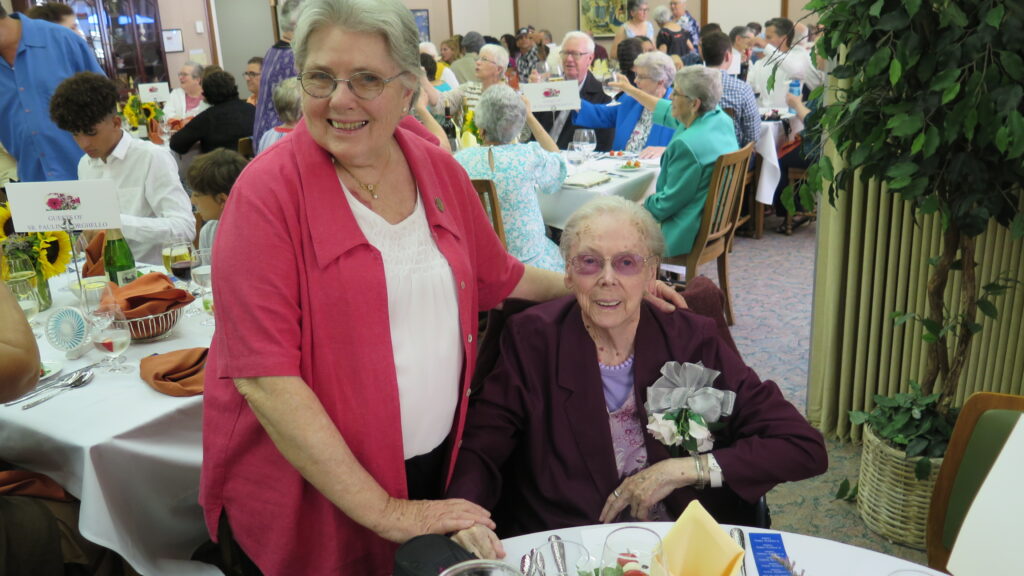My Vocation
share
By Sister Deborah Watson
Chapter One: Early Influences
They tell me that from the time I was 6, I said I wanted to become a sister. The first time I remember saying that was when I was 8 and my grandmother was dying. On Sunday afternoon we went with my mother, uncle and younger brothers to visit my grandmother at St. Mary’s Hospital. Sister Mary Placida, a member of the hospital administration and a good friend of my uncle who was a priest, would take my brothers and me to the cafeteria. Over ice cream she asked me what I wanted to be went I grew up. Without hesitation I answered that I wanted to be a sister and together we explored various options – a Sister of Mercy, a missionary sister, etc.
I was impressed by the sisters at my parish school. They were very supportive when my family situation was difficult, counseling my mother and making sure I had a healthy snack each morning. Sisters Mary St. John and Suzanne Toolan visited my grandmother when she was confined to bed at home. Theirs was a human presence over and above the role of teacher.

By seventh grade, I nagged Sister Mary Geraldine until she lent me a book about the life of Catherine McAuley, the founder of the Sisters of Mercy. I took the name Catherine for Confirmation, for my grandmother and for Mother McAuley. My school vocation project found me investigating many religious orders with their variety of ministries.
This was in the 1950’s in what I call my Burlingame Irish-Italian Catholic ghetto. Religious life was a viable and frequently chosen option for young people. It provided service and leadership opportunities that were not readily available to women at the time. Furthermore, church teaching in those days proclaimed religious life as the “state of perfection”—unequivocally the best way to serve God and others with a ticket to heaven pretty much guaranteed. My friend’s brothers were leaving for the seminary; girls ahead of me in school were entering the convent.
Religious life was part of my family milieu: I had a Jesuit uncle who would become the California Provincial; a mother who often mentioned her serious thoughts about becoming a nun; a grandfather who took me with him to the Religious of the Sacred Heart Convent where he was working on some art; and wonderful Capuchins like Father Cornelius who “let” me walk his dog many afternoons. In those days and in that context, it seemed like a normal lifestyle, rooted in strong family, school and parish faith experiences.
Chapter Two: Initial Discernment
In 1957 I enrolled in Mercy High School. Change was in the air. Beatniks had invaded San Francisco’s North Beach. A young Catholic politician named John F. Kennedy was making a splash nationally. I was privileged to encounter an extraordinary faculty at my all-girls school. Sisters Barbara Moran, Rosemary Sullivan, Mary Ann Scofield, Suzanne Toolan, Pat Toolan, Jacqueline Crouch, Marilyn Gouailhardou—to name just a few—were extraordinary teachers and mentors who gave us tools to navigate a dramatically changing world. Sister Rosaleen O’Sullivan became my “acompañante” (as we would say in Spanish).

By now it was no longer “cool” to express a desire to enter religious life. That resistance came from inner as well as outer pressures. Adolescent hormones and exposure to a wide range of life choices made me deny the attraction of religious life, even to myself. Rosaleen helped me deepen my prayer life and guided me in probing the nature of vocation as call. By my junior year, I accepted that God was calling me to religious life.
Though I continued to wrestle with the idea of celibacy, I put giving up of marriage and family in the context of St. Augustine’s words: “Our hearts are made for you, O God, and will be restless until they rest in You.” For me, that meant the intention to live a religious life was a way of putting the search for God at the core of my being and deepest desires. The arts which I was exposed to, especially literature, gave me vicarious experiences in which to grapple with a choice for celibacy.
As my prayer life deepened and I became aware of the Mary/Martha discourse in Catholic teaching that tended to exalt Mary’s contemplative posture and downplay Martha’s service, I also seriously considered contemplative religious life. I clearly remember the day I stood in the doorway of the Mexican Cloistered Carmelite Sisters Monastery on Fulton Street, but I couldn’t bring myself to ring the doorbell.
So, on September 7, 1961, I entered the Sisters of Mercy in Burlingame, California, resolved to endeavor to live the life of a contemplative in action.